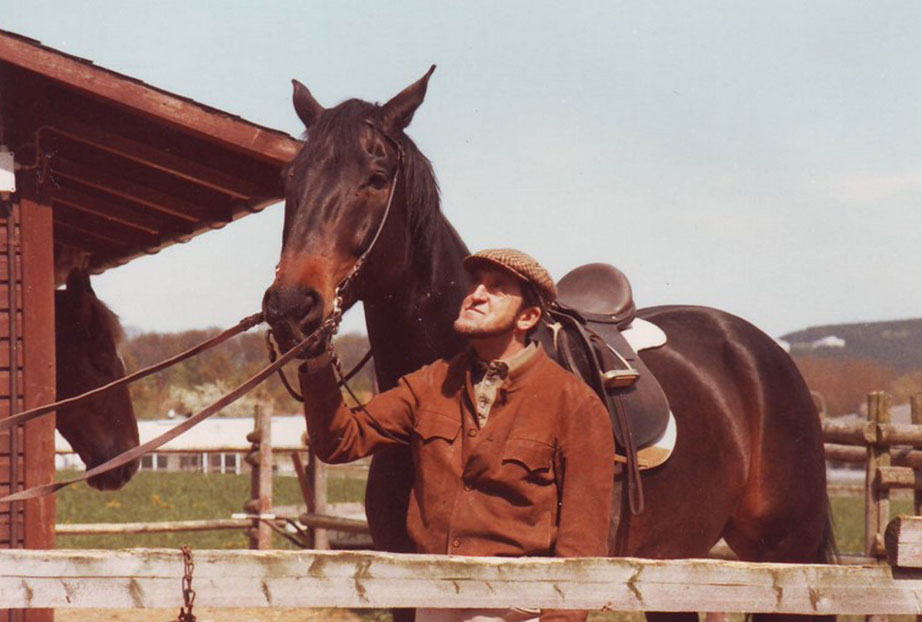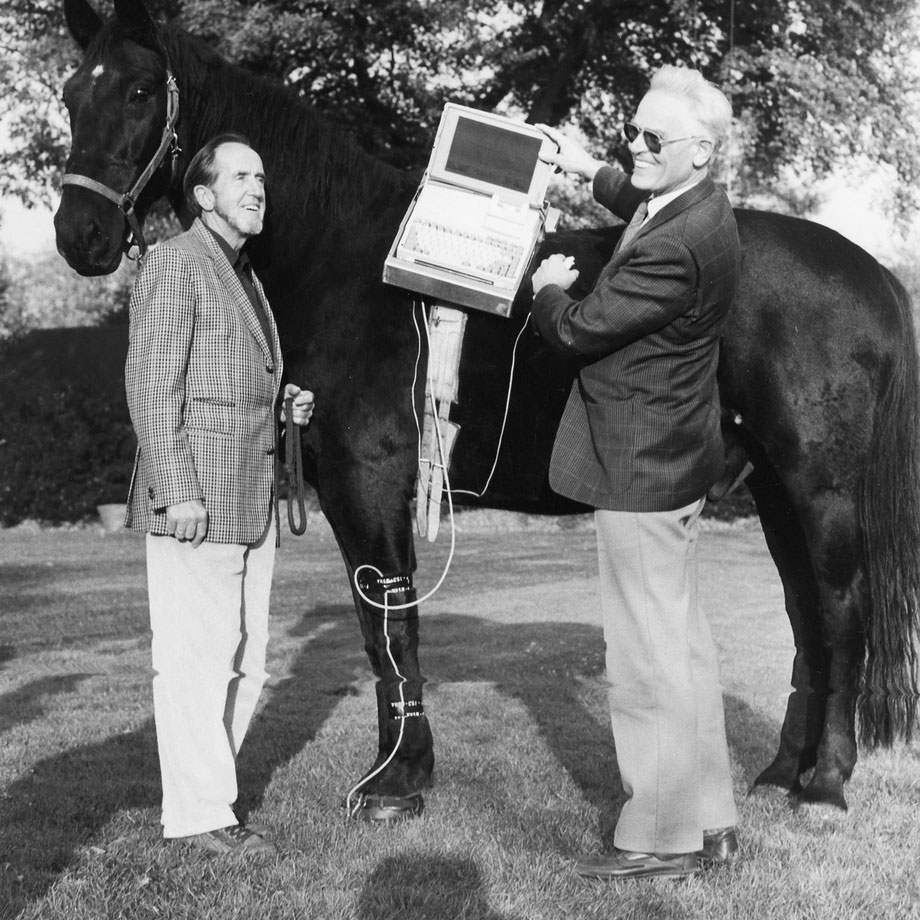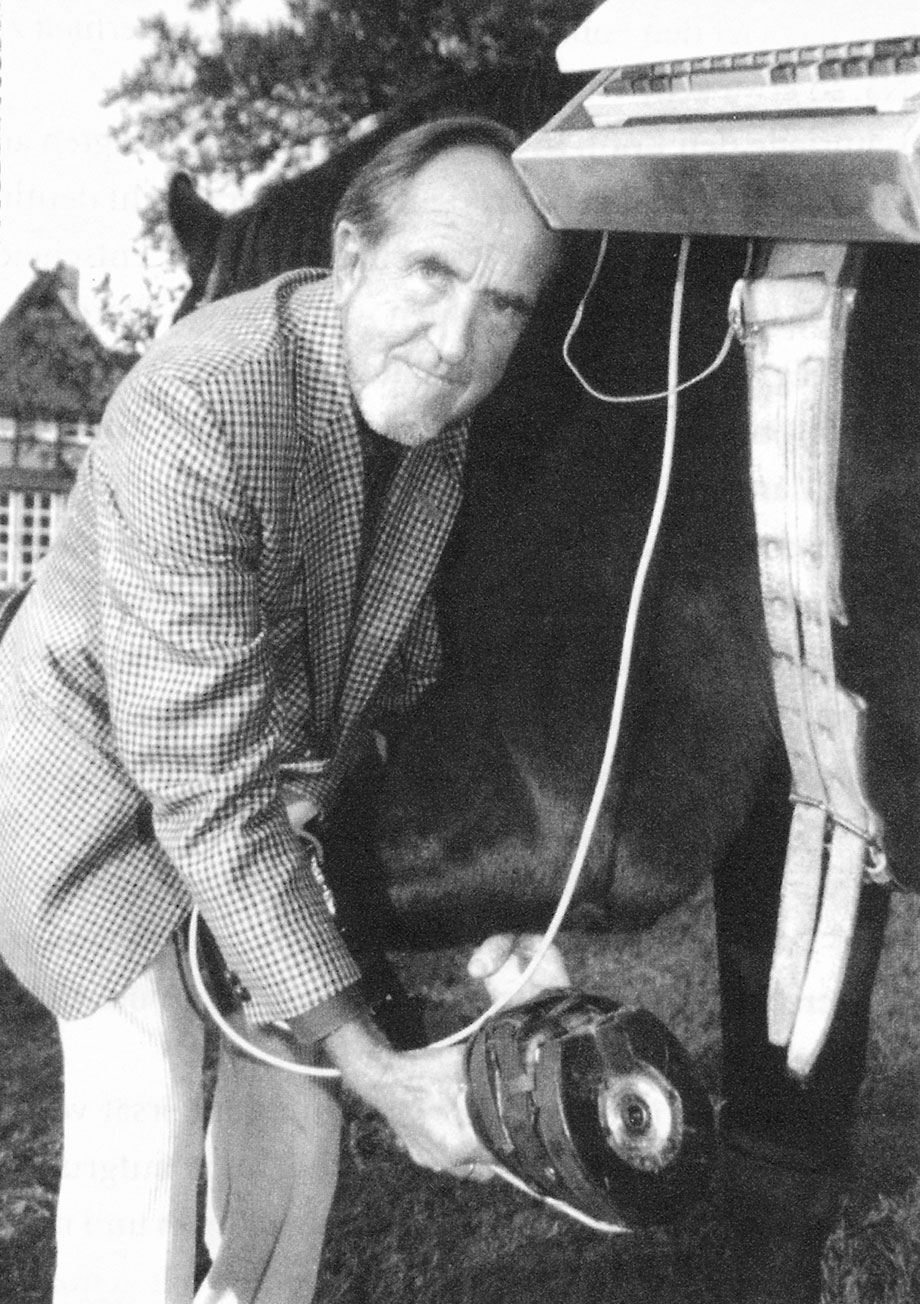

1974, Helmuth Dallmer went through any horse owner’s nightmare: His horse Durban was diagnosed with laminitis. The condition of the Westphalian gelding deteriorated to the point that the consultated clinic recommended that the horse should be put down. But for Helmuth Dallmer this was out of the question. Instead, the horse was relieved of its horseshoes and treated with the use of the “Bolz-Method”, a special shoeing technique.
Every hoof nail is a foreign body in a horse’s hoof.
But that conventional method flopped: Durban showed no signs of improvement. The horse lay down in its box unable to stand up again. In this situation, one thing was undeniable: It is impossible that hoof nails can be any good for a suffering hoof. So Helmuth Dallmer fetched some pliers and got rid of horseshoes and nails by himself which provided Durban with an immediate relief.
From tradition to innovation: The invention of the hoofshoes
Looking for a method of treatment which leads to a lasting cure, Helmuth Dallmer combined useful elements of quite divergent subject areas. Based on orthopedics he developed the idea to design inlay soles for horses. If people with feet problems benefit from them, why shouldn’t horses? In his sanitary engineering company, he was able to manufacture soles according to the hoof form. As plastics had proven to be particularly beneficial in the sanitary sector, he chose this material - which at that time was still quite new – for his hoofshoes. At first, the DALLMER Hoofshoes were being attached with tar and a tight figure-of-eight bandage. But real soon a more gentle procedure took over from that provisional method: Inspired by the way that his wife was attaching her artificial fingernails, Helmuth Dallmer tried that very two-component adhesive to glue on his hoofshoes. With success: Durban recovered completely from the illness.
Science surmounts resistance
But Helmuth Dallmer hadn’t reached the finish line yet. To make his invention accessible to larger circles, he decided to present it at the Equitana. But the international experts who were gathering at the Equestrian Sports World Fair weren’t ready for a change: Without further ado, Helmuth Dallmer was asked to yield the floor on the basis that the hoofshoes would be overly impairing the hoof mechanism. But this didn’t discourage him. That setback inspired him to systematically examine the hoofshoes‘ effectiveness and its impact on the hoof mechanism. Together with Professor Preuschoft of the Ruhr University Bochum, he succeeded in disproving that allegation and in confirming the hoofshoes‘ effectiveness.
Soon, the first prototype was followed by several other models so that nowadays riders who don’t want their horses to put up with a nailed-on hoof protection, fall back on a full range of reliable solutions by DALLMER Hoofshoes: Cuffs and T-Bar Shoes for adult horses, orthopedic foalshoes and Clogs for barefooted horses.
 Helmuth Dallmer with Durban
Helmuth Dallmer with Durban
 To justify his observation Helmuth Dallmer had the University of Bochum and the College of Technology Osnabrück carry out electronic tests.
To justify his observation Helmuth Dallmer had the University of Bochum and the College of Technology Osnabrück carry out electronic tests.
 DALLMER Diagnostic Shoe: This instrument didn’t only prove the effectiveness of the hoofshoes but also allowed a precise diagnosis of lameness.
DALLMER Diagnostic Shoe: This instrument didn’t only prove the effectiveness of the hoofshoes but also allowed a precise diagnosis of lameness.